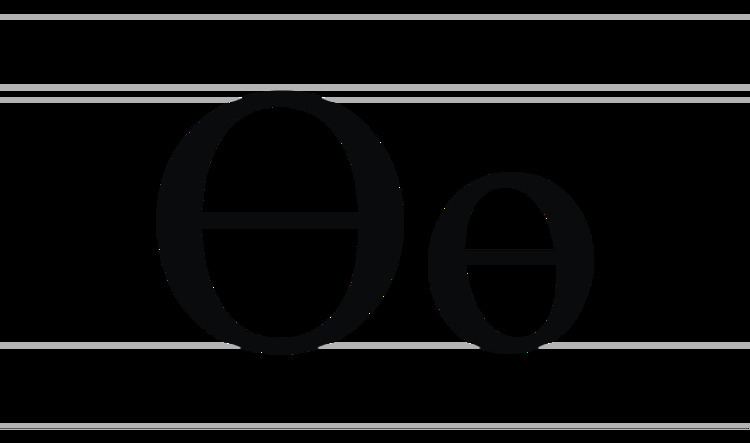 | ||
Shape
Its form was copied from the Latin letter barred O (Ɵ ɵ) used in Jaꞑalif and other alphabets. Despite having a similar shape, it is related neither to the Greek letter theta (Θ θ/ϑ) nor to the archaic Cyrillic letter fita (Ѳ ѳ). However, traditional forms of Cyrillic fita (since the 18th century) and oe are identical, and designers of Unicode's sample font were probably the first ones who split glyphs of the two letters (providing Oe with a horizontal bar and Fita with a tilde-shaped bar inside). In traditional typography, the shape of the inner line depends on typeface, not on meaning of the letter: the bar in both oe and fita may either be straight or wavy.
Usage
Oe is used in the alphabets of the Bashkir, Buryat, Kalmyk, Kazakh, Kyrgyz, Tuvan, Mongolian, and Yakut languages. It commonly represents the front rounded vowels /ø/ and /œ/, except in Mongolian where it represents /o/. In Kazakh, this letter may also express /wʉ/. Recently, the letter has also been adopted in the spelling of the Komi-Yazva language, where it represents a close-mid centralized back unrounded or weakly rounded vowel /ɤ̹̈/. The International Phonetic Alphabet uses the identically shaped Latin counterpart, ɵ, to represent the close-mid central rounded vowel, and sometimes also the mid central rounded vowel.
Oe is most commonly romanized as ⟨Ö⟩; but its ISO 9 transliteration is ⟨ô⟩.
In Tuvan the Cyrillic letter can be written as a double vowel.
